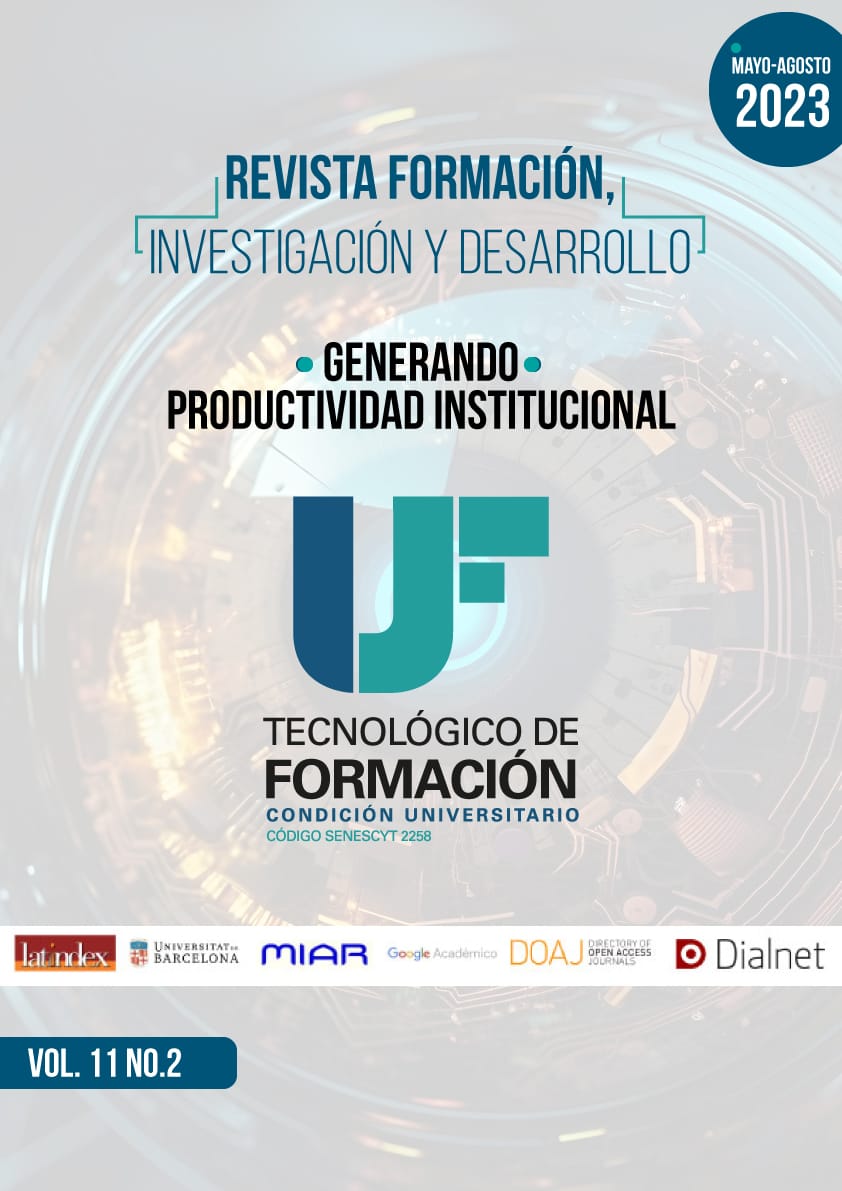The initial training of the speech therapist supported by the sciences Neuropsychology, Neurolinguistics and Psycholinguistics
Main Article Content
Abstract
The speech therapist, in addition to providing speech therapy treatment, must know the areas of the brain
that intervene in language, as well as the relationship established between them and the role of each one
in the development of this process. This situation requires that the importance for society be studied, the
preparation of speech therapists and from the training it means finding a solution to the theoretical and
practical gaps that have been evidenced up to now. From the field of action, a dichotomy is revealed
between the real needs of speech therapists and the content of the activities established in their training.
The objective of this article is to present the solution to these training insufficiencies through a Subject Program. Theoretical and empirical methods were used. From the formative-academic aspect, the student
manages to develop skills for exploration and diagnosis in neuropsychology and neurolinguistics, based
on the pertinent use of tests and neurocognitive evaluation instruments that serve him for the integral
speech therapy diagnosis.
Article Details

This work is licensed under a Creative Commons Attribution-NonCommercial-ShareAlike 4.0 International License.
Este trabajo tiene licencia DE Atribución/Reconocimiento-NoComercial-CompartirIgual 4.0 Internacional. CC BY-NC-SA 4.0.
How to Cite
References
Addine, F. (2013). La didáctica general y su enseñanza en la educación superior pedagógica. Aportes e impactos. La Habana. Pueblo y Educación.
Álvarez, C. (1984). Perfeccionamiento de los planes de estudio de la Educación Superior. En Varona. -- Año VI, no. 12. -- La Habana, ene-jun. 1984.
Álvarez, L. (2008). Logopedia y foniatría. Editorial Ciencias Médicas, La Habana
Álvarez, L. (2005). Entrenamiento en Logopedia para Defectólogos. Módulo I y IV. Villa Clara, MINSAP.
American Psychiatric Association (APA). (2014). Diagnostic and statistical manual of mental disorders (DSM V). Washington, DC: APA.
Butterworth, B. (2010). Foundational numerical capacities and the origins of dyscalculia. Trends in Cognitive Science, 14, 534- 541.Fernández Pérez, M. (2011), Lingüística de corpus y adquisición de la lengua, Madrid, Arco Libros.
Ferreres, Aldo; Martínez, Macarena; Jacubovich, Silvia; Olmedo, Alicia & López, Cynthia (2003), “Las alexias y los modelos de doble ruta de lectura en hispanohablantes. Revista argentina de Neuropsicología, 1, 37-52.
Garayzábal, Elena; Fernández, Montserrat & Díez-Itza, Eliseo (2010), Guía de intervención logopédica en síndrome de Williams, Madrid, Ed. Síntesis.
Gallardo Paúls, Beatriz & Moreno Campos, Verónica (2006): “Evolución de la pragmática en un caso de afasia de Broca severa. Revista de logopedia, Foniatría y Audiología, 26(4), 188-203.
García-Castellón, M.C (2016). La evaluación de la funcionalidad visual y perceptiva. En MartínLobo, P. y Vergara, E. Procesos e Instrumentos de valoración neuropsicológica educativa. (46-56). Madrid, España: Centro de Innovación e Investigación Educativa (CNIIE) del Ministerio de Educación, Cultura y Deporte.
García-Castellón, M.C (2016). Procesos y Programas de habilidades visuales y perceptivas para la lectura eficaz. En Martín-Lobo, P. Procesos y programas de neuropsicológica educativa. (34-48). Madrid, España: Centro de Innovación e Investigación Educativa (CNIIE) del Ministerio de Educación, Cultura y Deporte.
Gimeno Martínez, Manel (2009). El estudio de las estrategias argumentativas en estudiantes de enseñanza secundaria con TDAH”. Ponencia presentada en las V Jornadas de Lingüística Clínica, Valencia, 19 de febrero de 2009.
Harm, Michael W. & Seidenberg, Mark S. (2004), “Computing the meaning of words in reading: cooperative division of labor between visual and phonological processes. Psychological Review, 111, 662-720.
Hernández Sacristán, Carlos & Rosell-Clari, Vicent (2009). Syntax and conversation in aphasia. A strategic restrictive use of Spanish and Catalan connector QUE by aphasic speakers. Clinical Linguistics & Phonetics, 23(10), 717-741.
Hernández Sacristán, C., Rosell-Clari, Vicent; Serra Alegre, Enrique & Quiles Climent, Josep (2012), “On natural metalinguistic abilities in aphasia: A preliminary study. Aphasiology, 26 (2), 199-219.
Martin-Lobo, P. (2016). Procesos y Programas de Neuropsicología Educativa. Ministerio de Educación, Cultura y Deporte de España, Centro Nacional de Innovación e Investigación, CNIIE.
Martin-Lobo, P. y Vergara, E. (2016). Procesos e instrumentos de evaluación Neuropsicológica Educativa. Ministerio de Educación, Cultura y Deporte de España, Centro Nacional de Innovación e Investigación, CNIIE.
Rosselli, M., Ardila, A., Bernal, B. (2015). Modelo de conectividad de la circunvolución angular en el lenguaje: meta análisis de neuroimágenes funcionales. Revista Neurología, 60 (11):495-503.
Vallés, A., Arándiga, C. (2010). Lectoescritura 1. Valencia: Editorial Promolibro.
Wake, M., Levickis, P., Tobin, S., Gold, L., Ukoumunne, O.C., Goldfiedl, S., Zens, N., Le, H., Law, J. y Reilly, S. (2015). Two year Outcomes of a Population-Based Intervention for Preschool Language Delay: An RTC. Pediatrics, 136 (4), 838-847.

